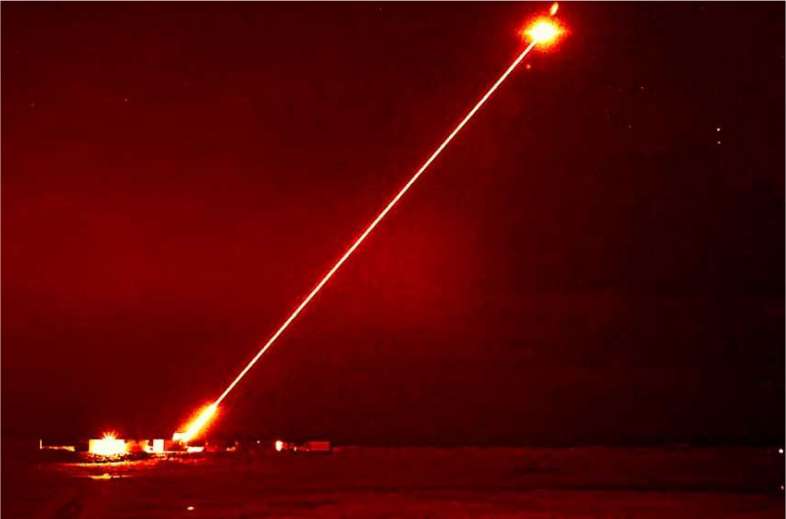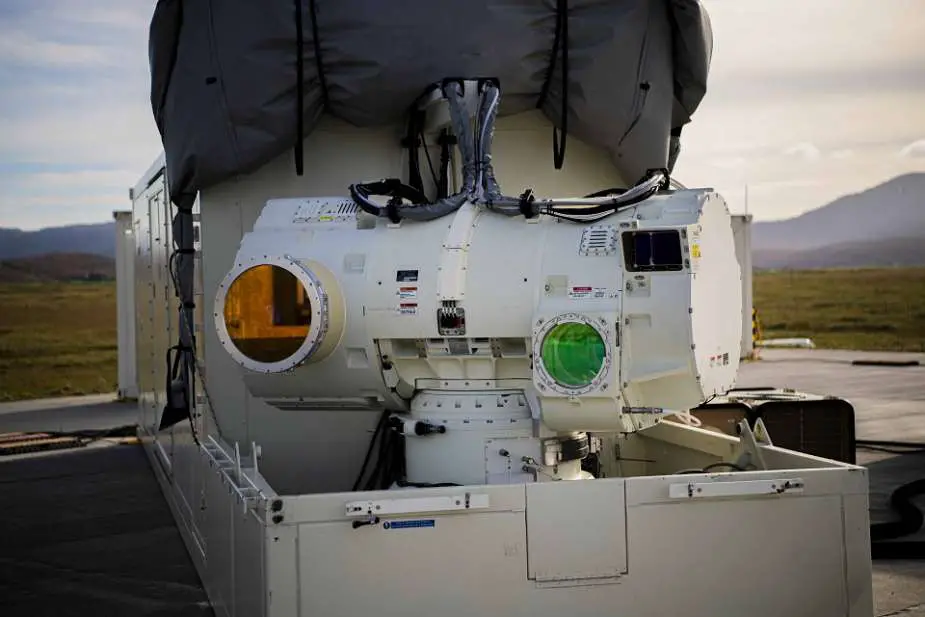Breaking news
Ukraine could receive UK's DragonFire laser weapon before 2027.
According to The Telegraph on April 12, 2024, UK Defence Secretary Grant Shapps, speaking during a visit to the DragonFire lab, indicated that prototypes of the DragonFire laser-directed energy weapon might be deployed in Ukraine before 2027. He discussed the possibility of Ukraine receiving prototypes before they are fully finalized, suggesting that they could be operational before reaching complete refinement.
Follow Army Recognition on Google News at this link

The DragonFire laser weapon can hit a target as small as a pound coin from a distance of one kilometer. (Picture source: UK MoD)
Shapps revealed that although the laser system is still under development, there are plans to accelerate its deployment. The UK aims to formally adopt the DragonFire into its military arsenal by 2027, but efforts are underway to make it available to Ukraine sooner.
The Ministry of Defence has expedited the deployment of the DragonFire laser system, adopting a new procurement model that prioritizes the rapid introduction of minimally viable capabilities, which are then refined during service. This model is designed to provide military personnel with immediate access to essential technologies that can be adapted in response to emerging threats, and to address previous issues such as inter-service competition and the challenges associated with completing projects on time and within budget constraints.
The procurement reforms include significant structural changes such as the introduction of new checks and balances and expanded roles for defense scientists, government export leads, finance experts, and industry partners, who are now more deeply involved in shaping proposals before they reach the approval stage. Additionally, the focus has shifted towards developing equipment with potential for export from the onset and initiating earlier collaboration with the UK defense industry to accelerate the delivery process.
The DragonFire laser-directed energy weapon (LDEW) system is a collaborative defense project developed by leading UK defense companies including MBDA UK, Leonardo UK, and QinetiQ Group, alongside the UK Ministry of Defence (MoD). Initiated in 2018, the 50 kW-class system was originally aimed at countering unmanned aerial vehicles (UAVs), but its scope has since expanded to address threats such as artillery ammunition, cruise missiles, and ballistic missiles. During operational tests conducted in March 2024, the system successfully intercepted a quadcopter and an artillery mine, demonstrating its targeting precision—it can hit a target as small as a pound coin from a distance of one kilometer. The maximum effective range of the system, however, has not been disclosed.
Technologically, the DragonFire system integrates 37 laser beams, each with a power of 1.5 kW, configured in a hexagonal pattern. These beams are combined using a mirror system to amplify their destructive potential. The lasers operate at a wavelength of 1 micron, akin to infrared light, which renders the emissions invisible and silent. A ground-based version of DragonFire is currently in development and is expected to be tested on a truck-mounted platform during "user experiments" with army personnel in September 2024. These tests are coordinated by DSTL project manager Matt Cork and aim to refine the system and identify any operational issues.
A significant feature of the DragonFire system is its operational cost-efficiency. According to the British Ministry of Defence, each firing of the weapon costs approximately £10, markedly lower than the costs associated with traditional anti-aircraft missiles, which can run into several million dollars each. This makes the DragonFire system an economically viable option for various military applications, including those where a high volume of fire may be required, including to meet certain needs of the Ukrainian Army.
In terms of future plans, the system is set to undergo additional development and testing to potentially extend its application across different military platforms such as Royal Navy warships, British Army Wolfhound 6x6 armored vehicles, and possibly Royal Air Force aircraft. These developments aim to reduce the system's size, weight, and power requirements to improve its deployability and operational effectiveness.

Technologically, the DragonFire system integrates 37 laser beams, each with a power of 1.5 kW, configured in a hexagonal pattern. These beams are combined using a mirror system to amplify their destructive potential. (Picture source: UK MoD)























